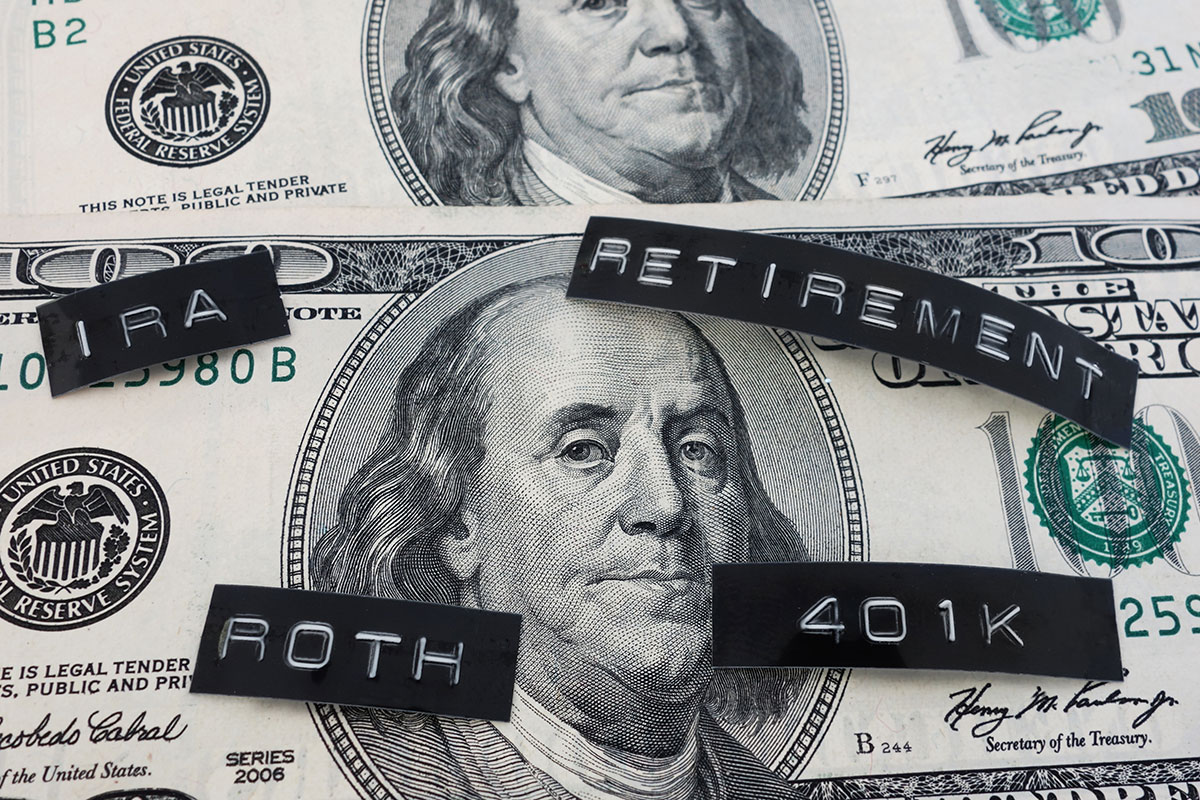You’ve very likely heard of this mythical 401(k) and you may know it has something to do with saving money. That’s a start. In this post, I’m going to break down what a 401(k) plan is, why it exists, how it works, and the benefits of it. Ready to learn?
What is a 401(k)?
So first off, what is a 401(k) and where did it come from? The name “401(k)” comes from the subsection of the Internal Revenue Code. Here’s some light reading if you’re really interested. If you actually clicked that link and read any of that and you’re still awake, let’s move on. The 401(k) as we know it is an employer sponsored retirement savings plan. In other words, you have to have a job in order to have access to a 401(k). Specifically, you have to work for an employer who offers a 401(k) plan. Technically, if you have your own business, the employer could be you, but I’ll talk the details of a “solo 401(k)” in another post. Ok, so it’s a savings plan…what’s so special about it? The two biggest benefits of a 401(k) are the tax advantages and the employer matching. Let’s break those down…
Tax Advantages
You contribute to a 401(k) via automatic deductions from your paycheck. In a traditional 401(k), these deductions are pre-tax, not to be confused with “no-tax”. This means that the money goes directly from your paycheck into your 401(k) account without being taxed. Why does that matter? It matters because this lowers your current taxable income. Let’s say you’re a single person that makes $90,000 a year. The government loves you because you likely make more money than you really need so they say, “oh, you won’t mind if I take a chunk of that”. That chunk is going to max out at 24% (this is your marginal tax rate). No, it’s not a straight 24% of your salary, it’s a progressive bracket. As I’m getting into marginal and progressive tax, I’m realizing, that’s another blog topic. Let’s stay on track. Bottom line, you’re taxed on what you bring home in your check. When you contribute to a 401(k) pre-tax, you are paying yourself first before the tax man comes calling and you are only taxed on what’s leftover. In 2020, you can contribute a maximum of $19,500 per year to your 401(k) ($26,000 if you’re age 50 or older). This means that if you contributed the max (keep in mind you can contribute any amount up to the max), you would put $19,500 into your 401(k) account (read as putting your money into an account for you). This effectively reduces your taxable income by $19,500. So from a tax perspective, it looks like you only made $68,400 and this is what you’re taxed on instead of being taxed on the full $90,000. And so why does that matter? It matters because in this scenario, this drops you to a lower marginal tax bracket…to 22% instead of 24% in 2020, saving you $$$ in taxes. This is ON TOP of the $19,500 you paid yourself in your 401(k)! But let me be clear, you’ll still have to eventually pay taxes, but not until you pull the money out. More on that later.

Employer Matching
Another huge benefit of the 401(k) plan comes when your employer offers a match. This means that your employer will match your 401(k) contributions dollar for dollar up to a certain percentage of your salary, usually around 6%. Now, to be clear, not every employer will match 100%. Some will do 50%. Some don’t match at all. Boo them! But if there’s a match, take it. It’s literally free money. Let’s put some numbers on this. Let’s say you, our $90,000 a year worker, contributes the 401(k) max which is…pop quiz…$19,500. Nailed it! And your employer does a 100% match up to 6%. That means your employer contributes another $5,400 on top of your $19,500, totaling $24,900. But you may be saying, “wait, that’s over the maximum”. Ah, that’s part of the beauty of it. The employer matching funds don’t count towards to limit. This is where you’re free to do a happy dance.

Where does the money actually go?
Now you know how a 401(k) works and the primary benefits. So where does the money go when you contribute? A 401(k) plan will offer some limited number of pre-packaged funds. The number of options will depend on who the employer works with to administer the plan and what type of package they sign up for. Typical choices will be some mix of different types of funds holding stocks, bonds, and other funds. The mix will tend to cater toward different stages of the lives of the employees as well as relative risk tolerance. Your HR department or account administrator can typically help guide you through these choices…or you can subscribe to this blog and get some ideas of where to invest.
But the idea is that the money is invested into the funds you decide on and yields a return. This return will obviously fluctuate with the market, perhaps even going down at times, but the average historical market return is somewhere around 7% – 10%. Now factor in your contributions and compounding interest and you can see how your nest egg starts to grow quickly over time.
When can you access the money?
A 401(k) is a retirement savings account. So although it’s your money, you’re heavily penalized if you withdraw the money before age 59½ (or age 55 if you retire at 55). Remember earlier I talked about the tax benefits of a 401(k) and how it’s pre-tax, not no-tax? Well, here’s where that part comes in. Though you didn’t pay any taxes on the money going into the account, you have to pay taxes on the money you withdraw from the account, at the standard rate for your current tax bracket when you make the withdrawal. This applies to everyone, even if you wait until after age 59½. If you withdraw the money before retirement (age 55) or before age 59½, then you have a pay a 10% penalty ON TOP of the standard marginal tax. There are a few exceptions for hardships and you can technically make yourself a loan, but don’t think of your 401(k) as a pre-retirement money source. In short, just don’t take the money out before retirement. It’s that simple.
Now there’s also something called a Roth 401(k). It’s exactly like the 401(k) I’ve described above, but the difference is in how it’s taxed. Instead of paying taxes when you withdraw, you pay the taxes up front before you make your contributions. Then, when you go to withdraw the money in retirement, you pay no taxes on the gains. So it’s a choice of whether you want to pay the taxes up front or on the back end. Best to consult with a tax professional to help you make the best choice.
The Summary – So why invest in a 401(k)?
For 99.9999% of us, wealth doesn’t happen overnight. But with smart planning and steady saving, it can definitely become a reality over time. Patience, grasshopper.







